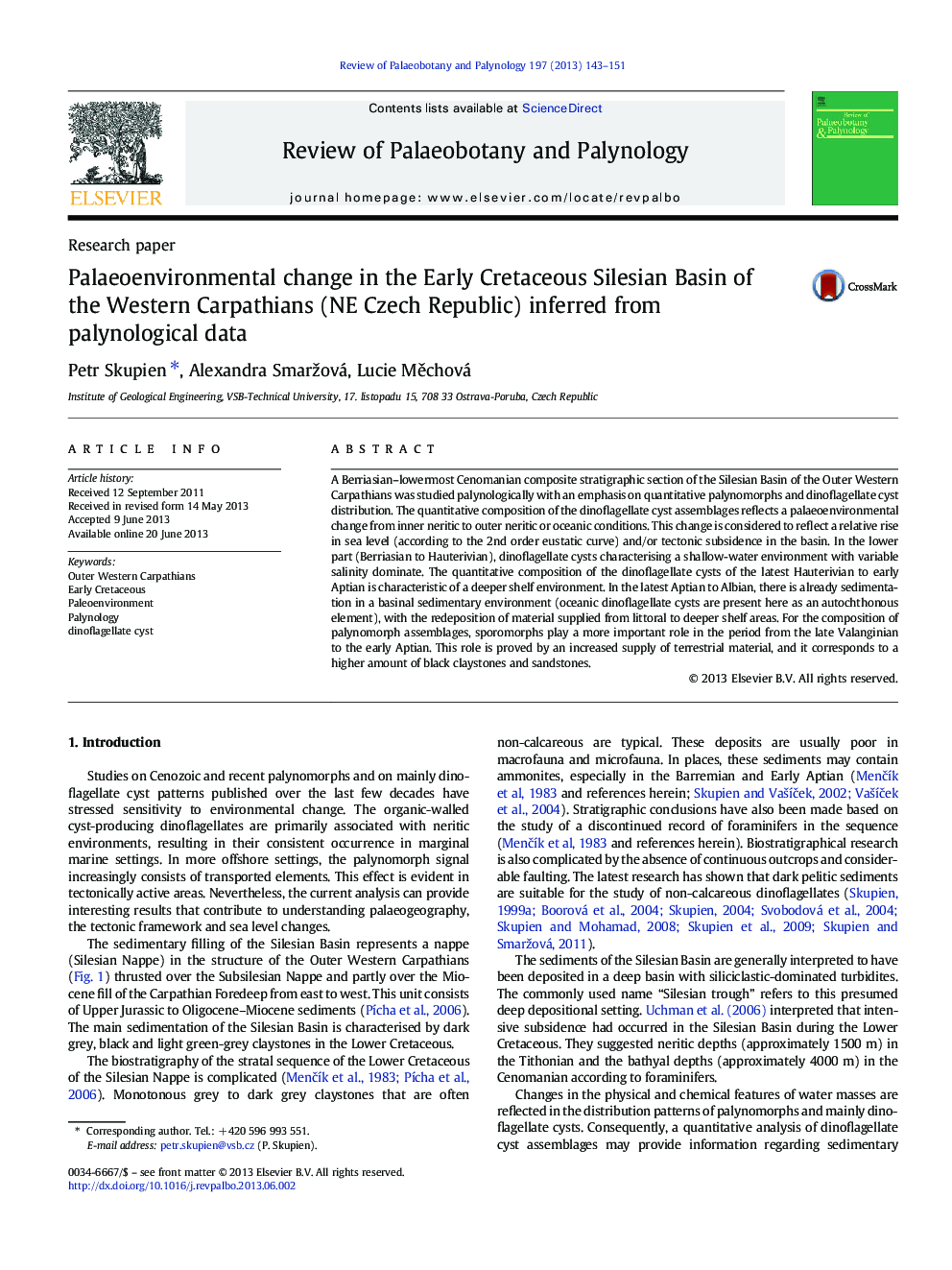| Article ID | Journal | Published Year | Pages | File Type |
|---|---|---|---|---|
| 6448753 | Review of Palaeobotany and Palynology | 2013 | 9 Pages |
â¢Quantitative palynomorph study in the Lower Cretaceous of the Western Carpathiansâ¢Gradual deepening of the Silesian Basin was detected.â¢Dinoflagellate cyst assemblages indicate neritic palaeoenvironment.â¢The change reflects a relative rise in sea-level.
A Berriasian-lowermost Cenomanian composite stratigraphic section of the Silesian Basin of the Outer Western Carpathians was studied palynologically with an emphasis on quantitative palynomorphs and dinoflagellate cyst distribution. The quantitative composition of the dinoflagellate cyst assemblages reflects a palaeoenvironmental change from inner neritic to outer neritic or oceanic conditions. This change is considered to reflect a relative rise in sea level (according to the 2nd order eustatic curve) and/or tectonic subsidence in the basin. In the lower part (Berriasian to Hauterivian), dinoflagellate cysts characterising a shallow-water environment with variable salinity dominate. The quantitative composition of the dinoflagellate cysts of the latest Hauterivian to early Aptian is characteristic of a deeper shelf environment. In the latest Aptian to Albian, there is already sedimentation in a basinal sedimentary environment (oceanic dinoflagellate cysts are present here as an autochthonous element), with the redeposition of material supplied from littoral to deeper shelf areas. For the composition of palynomorph assemblages, sporomorphs play a more important role in the period from the late Valanginian to the early Aptian. This role is proved by an increased supply of terrestrial material, and it corresponds to a higher amount of black claystones and sandstones.
